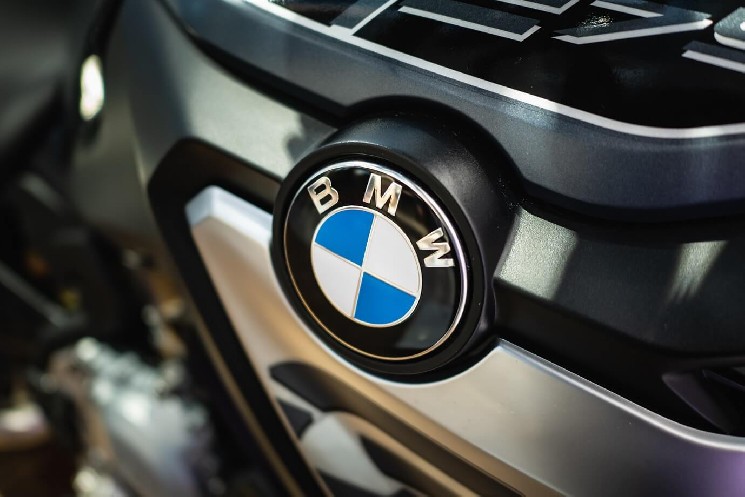Meta and BMW Partner to Create AR and VR Experiences for the Passenger Seat – Is the Metaverse Making a Comeback?

Facebook and Instagram owner Meta and German car giant BMW revealed progress in their joint exploration of how augmented and virtual reality technology can work inside a fast-moving vehicle.
Meta is continuing on its metaverse path. Per BMW’s announcement,
The BMW Group Technology Office USA and Meta’s Reality Labs Research demonstrated, «for the first time, the ability to accurately display stable virtual reality (VR) and mixed reality (MR) content to passengers in a fast-moving car, even when making turns, going over speed bumps, and accelerating.»
The goal of this joint research, announced in 2021, is to explore the way in which AR and VR could be integrated into smart vehicles in the future in order to improve the «passenger experience,» Meta’s announcement said.
And this is not just about your family’s car. Per Meta,
«If we get it right, this technology could revolutionize travel in cars, trains, planes and beyond, unlocking new forms of hands-free communication, entertainment and utility — giving us far more value than the screens and instruments we’re used to seeing in vehicles today.»
Claus Dorrer, Head of BMW Group Technology Office USA in Mountain View, called the research «promising,» and said:
«It is too early to tell exactly how or when this technology will make it into customers’ hands, but we envision a number of potential use cases for XR devices in vehicles — from assisting the driver in locating their car in a crowded parking lot to alerting them to hazards on the road and surfacing important information about the vehicle’s condition.»
The problem is movement
The issue the companies’ goal was facing is that the number of sensors, inertial motion sensors (IMUs), and cameras inside VR headsets work to estimate the location and the motion of the headset, and therefore, its user.
However, in a moving vehicle, these sensors face a conflict. The headset’s motion sensors think it is moving, but its cameras think it is standing still when looking at the car’s interior.
But the two companies made «a huge feat,» explaining that,
«To solve this problem, we [incorporated] IMU data from a BMW car’s sensor array in real time into the tracking system of our Project Aria research glasses. This additional information allows the system to calculate the glasses’ location relative to the car.»
Transferring the tracking system to a Meta Quest Pro headset allowed the team to accurately anchor virtual objects to a moving car using a digital twin of that car.
This way, the team said they were able to «demo some compelling virtual and mixed reality passenger experiences.»
The next step, said the partners, is to add the car’s location relative to the world in order to enable world-locked rendering.
«Access to the car’s precise 6DOF positioning system could allow us to render world-locked virtual content outside of the vehicle, like identifying landmarks and other points of interest.»
Meta noted that it will continue to work with BMW and that it expects the capability they develop to be «invaluable» for AR glasses and personalized AI assistants in the days to come.






 Bitcoin
Bitcoin  Ethereum
Ethereum  Tether
Tether  USDC
USDC  TRON
TRON  Dogecoin
Dogecoin  Cardano
Cardano  Bitcoin Cash
Bitcoin Cash  Chainlink
Chainlink  LEO Token
LEO Token  Monero
Monero  Stellar
Stellar  Zcash
Zcash  Litecoin
Litecoin  Hedera
Hedera  Dai
Dai  Cronos
Cronos  OKB
OKB  Tether Gold
Tether Gold  Ethereum Classic
Ethereum Classic  KuCoin
KuCoin  Gate
Gate  Algorand
Algorand  Cosmos Hub
Cosmos Hub  VeChain
VeChain  Dash
Dash  TrueUSD
TrueUSD  Tezos
Tezos  Stacks
Stacks  IOTA
IOTA  Basic Attention
Basic Attention  Theta Network
Theta Network  Decred
Decred  NEO
NEO  Synthetix
Synthetix  Qtum
Qtum  Ravencoin
Ravencoin  0x Protocol
0x Protocol  DigiByte
DigiByte  Zilliqa
Zilliqa  Nano
Nano  Holo
Holo  Numeraire
Numeraire  Siacoin
Siacoin  Waves
Waves  Ontology
Ontology  BUSD
BUSD  Status
Status  Enjin Coin
Enjin Coin  Pax Dollar
Pax Dollar  Hive
Hive  Lisk
Lisk  Steem
Steem  Huobi
Huobi  NEM
NEM  OMG Network
OMG Network  Bitcoin Gold
Bitcoin Gold  Augur
Augur  Ren
Ren  HUSD
HUSD